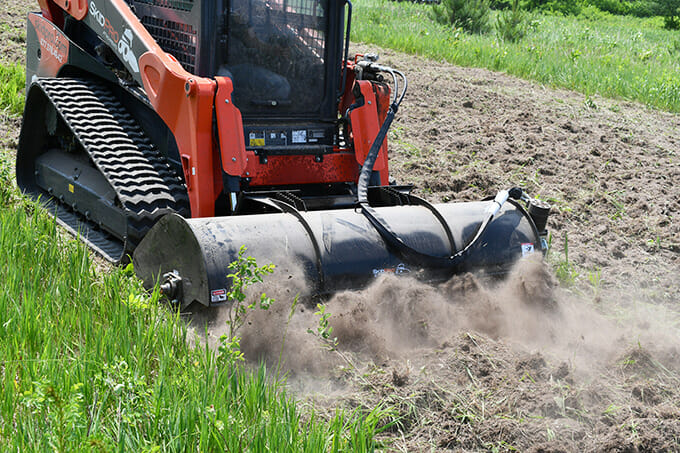

(615) 547-4033
Tillers
Tillers, often referred to as rototillers or cultivators, are essential agricultural and gardening tools used for soil preparation and cultivation. These machines come in various sizes and configurations, but they all share the primary purpose of breaking up, aerating, and loosening soil to create an ideal environment for planting and gardening. Here’s a summary of tillers:
- Soil Preparation: Tillers are used to prepare soil for planting by breaking up compacted soil, removing weeds and debris, and improving soil aeration. They create a loose, crumbly texture that allows plant roots to penetrate easily and access nutrients and water.
- Types: Tillers are available in different types, including rear-tine, front-tine, and mini-tillers. Rear-tine tillers are typically the most powerful and are suitable for larger areas, while front-tine tillers are more maneuverable and work well in smaller spaces.
- Power Sources: Tillers can be powered by gasoline engines, electric motors, or in some cases, by hand (manual or human-powered). The choice of power source depends on the size of the area to be tilled and the availability of power outlets or fuel.
- Depth and Width: Most tillers allow for adjustable tilling depths and widths, giving gardeners control over how deeply and broadly they work the soil. This flexibility is essential for various planting needs.
- Gardening and Agriculture: Tillers are used in both commercial agriculture and home gardening. In agriculture, they are often employed for large-scale land preparation, while in gardening, they help maintain vegetable gardens, flower beds, and lawns.
- Weed Control: Tilling is an effective method for controlling weeds by uprooting and burying weed seeds and existing weed growth. This reduces competition for nutrients and sunlight, benefiting cultivated plants.
- Mixing Soil Amendments: Tillers can be used to incorporate soil amendments such as compost, organic matter, and fertilizers into the soil. This improves soil fertility and nutrient content.
- Time and Labor Savings: Tillers significantly reduce the manual effort and time required for soil preparation. They are more efficient and faster than traditional hand tools like shovels and hoes.
- Seasonal Use: Tillers are typically used in the spring and fall for initial soil preparation and planting. They may also be used for seasonal garden maintenance, depending on the specific gardening goals.
- Maintenance: Proper maintenance, including cleaning, oil changes, and blade sharpening, is essential for the longevity and effectiveness of tillers.
